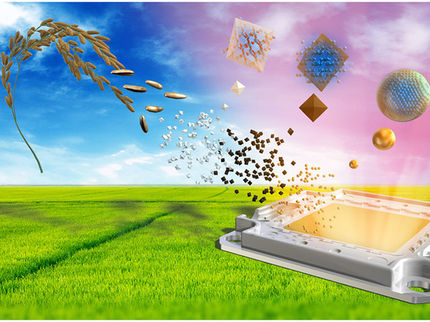Quantum physics with superconductivity in LEDs
Novel approach paves way for new quantum devices
Advertisement
A team of University of Toronto physicists led by Alex Hayat has proposed a novel and efficient way to leverage the strange quantum physics phenomenon known as entanglement. The approach would involve combining light-emitting diodes (LEDs) with a superconductor to generate entangled photons and could open up a rich spectrum of new physics as well as devices for quantum technologies, including quantum computers and quantum communication.
Entanglement occurs when particles become correlated in pairs to predictably interact with each other regardless of how far apart they are. Measure the properties of one member of the entangled pair and you instantly know the properties of the other. It is one of the most perplexing aspects of quantum mechanics, leading Einstein to call it "spooky action at a distance."
"A usual light source such as an LED emits photons randomly without any correlations," explains Hayat, who is also a Global Scholar at the Canadian Institute for Advanced Research. "We've proved that generating entanglement between photons emitted from an LED can be achieved by adding another peculiar physical effect of superconductivity - a resistance-free electrical current in certain materials at low temperatures."
This effect occurs when electrons are entangled in Cooper pairs – a phenomenon in which when one electron spins one way, the other will spin in the opposite direction. When a layer of such superconducting material is placed in close contact with a semiconductor LED structure, Cooper pairs are injected in to the LED, so that pairs of entangled electrons create entangled pairs of photons. The effect, however, turns out to work only in LEDs which use nanometre-thick active regions – quantum wells.
"Typically quantum properties show up on very small scales – an electron or an atom. Superconductivity allows quantum effects to show up on large scales – an electrical component or a whole circuit. This quantum behaviour can significantly enhance light emission in general, and entangled photon emission in particular," Hayat said.
Most read news
Organizations
Other news from the department science

Get the chemical industry in your inbox
By submitting this form you agree that LUMITOS AG will send you the newsletter(s) selected above by email. Your data will not be passed on to third parties. Your data will be stored and processed in accordance with our data protection regulations. LUMITOS may contact you by email for the purpose of advertising or market and opinion surveys. You can revoke your consent at any time without giving reasons to LUMITOS AG, Ernst-Augustin-Str. 2, 12489 Berlin, Germany or by e-mail at revoke@lumitos.com with effect for the future. In addition, each email contains a link to unsubscribe from the corresponding newsletter.




























































